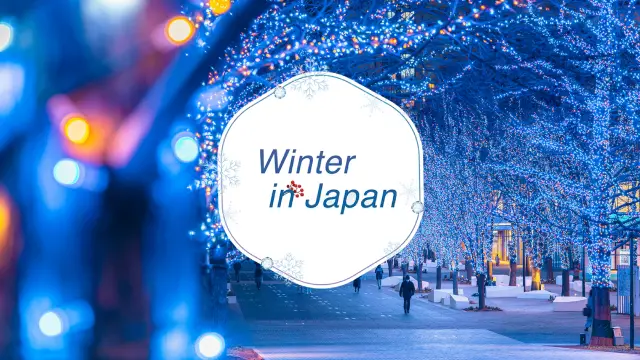The main gate is actually the approach to the temple, called Momiji Baba—it's a famous spot for viewing autumn leaves. In spring, the blue maples and cherry blossoms bloom together, creating a stunning scene. 🎊

Verified [Verified] denotes information that has been published with confirmation of its owing parties.
Ogura-Yama Nison-in Temple
The temple is located at the foot of Mt. Ogura, which appears in the Hyakunin Isshu (100 poems), and has a long history associated with the emperor.
Founded in the Jouwa period (834-848), the temple is also known as the SANTEIRYO (Emperors' Mausoleum), which is said to contain a part of the bones of Emperor Saga, Emperor Tsuchimikado, Emperor Gosaga, and Emperor Kameyama, and as a temple associated with Honen Shonin.
The main statue of KEGONNISON, designated as an Important Cultural Property, was created by KASUGA Buddhist priests in the mid-Kamakura period (1185-1333) and is enshrined in the center of the main hall, which underwent its first major renovation in about 350 years in 2016, and can be seen with the Shaka Nyorai statue on the right and Amida Nyorai statue on the left.
The temple grounds, which cover an area of about 50,000-tsubo (about 197684.3 yards ), include the main hall, the CHOKUSHI-gate, the SOUMON-gate, Hasami- Shrine, the TANKU-byo Temple, the Shoro (temple bell), and the GARAN (a place where monks gather to practice Buddhism). Soumon-gate was moved and donated by Suminokura Ryoi from Yakuimon-Gate in Fushimi Castle in 1613 and is designated as a cultural asset by Kyoto City as a Muromachi period building.
Also worth seeing is the Chokushi-gate, a gateway through which only emperors' messengers could pass. There is also Hachisha-gu Shrine, which enshrines eight shrines: Ise Jingu Shrine, Matsuo Taisha Shrine, Atago Shrine, Iwashimizu Hachimangu Shrine, Atsuta Jingu Shrine, Hiyoshi Shrine, Yasaka Shrine, and Kitano Tenmangu Shrine, and Bentendo, which enshrines the KUZURYU-OMIKAMI and UGAJIN deities.
The approach to the temple is famous for its autumn foliage, with maple and cherry trees planted alternately along a 100-meter path, providing a spectacle of bright red in autumn. The tea ceremony room, "Misonotei," located at the back of the Shoin, was originally a dressing room for the sixth daughter of Emperor Gomizunoo, Yoshiko-naishinno, which was moved to Nison-in and is open for use during certain periods in spring and fall.
※Please confirm when using the "Misonotei."
Highlights
-
The statues of Shaka Nyorai and Amida Nyorai are important cultural properties.
-
The main statue of Shakyamuni Buddha and the statue of Amitabha are Important Cultural Properties. The temple grounds are home to Garan, Hasami- Shrine, and Benten-do Hall, among others.
-
The approach to the temple is famous for its autumn foliage.
-
The tea ceremony room "Misonotei" is open to the public during certain periods in spring and fall (confirmation is required before use).
Photos
-

The approach leading from the Sanmon-gate to the precincts of the temple shows the changing faces of the four seasons.
-

The right side is the statue of the Shaka Nyorai, and the Left side is the statue of the Amida Nyorai
-

"Misonotei" is a tea ceremony room available only in spring and fall. The beautiful garden will soothe you
Reviews
Some reviews are AI-translated.
Details
- Name in Japanese
- 小倉山 二尊院
- Postal Code
- 616-8425
- Address
- 27 Saganisonin Monzen Chojincho, Ukyo-ku, Kyoto City, Kyoto
- Telephone
- 075-861-0687
- Holiday
- Open every day
- Hours
- 9:00am - 4:30pm (Admission is closed)
- Admission
- 500 yen for adults (junior high school students and older), free for children (elementary school students and younger)
- Directions
-
1)City bus: Approx. 10 min. walk from Saga Shakado-mae bus stop.
2)About 15 min. walk from Arashiyama Sta. on the Keifuku Arashiyama Line
3)About 19 min. walk from Saga-Arashiyama Sta. on the JR San’in Line - Website
- Official Website (English)
Check also...
Please cooperate with this survey.
Thank you for your cooperation with the survey.
Recommended for you
-

Winter in Japan 2025
-

The Complete Guide to Ichibankuji
-

Top Recs for Niche Travel in Japan
-

Mt.TAKAO+one
-

Prince Snow Resorts Feature
-

7 Tips to Dig into the Best of Gotemba
-

Unique Experience in Kansai
-

The Best of NIPPON47
-

Kansai’s Hot Springs
-

A Guided of Bridge Connecting Honshu and Shikoku
-

Kagoshima Responsible Tourism
-

Exceptional Japan Finds










